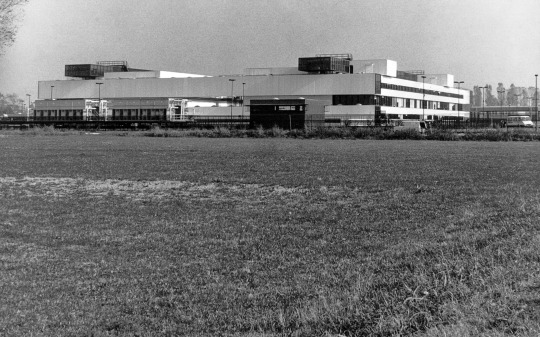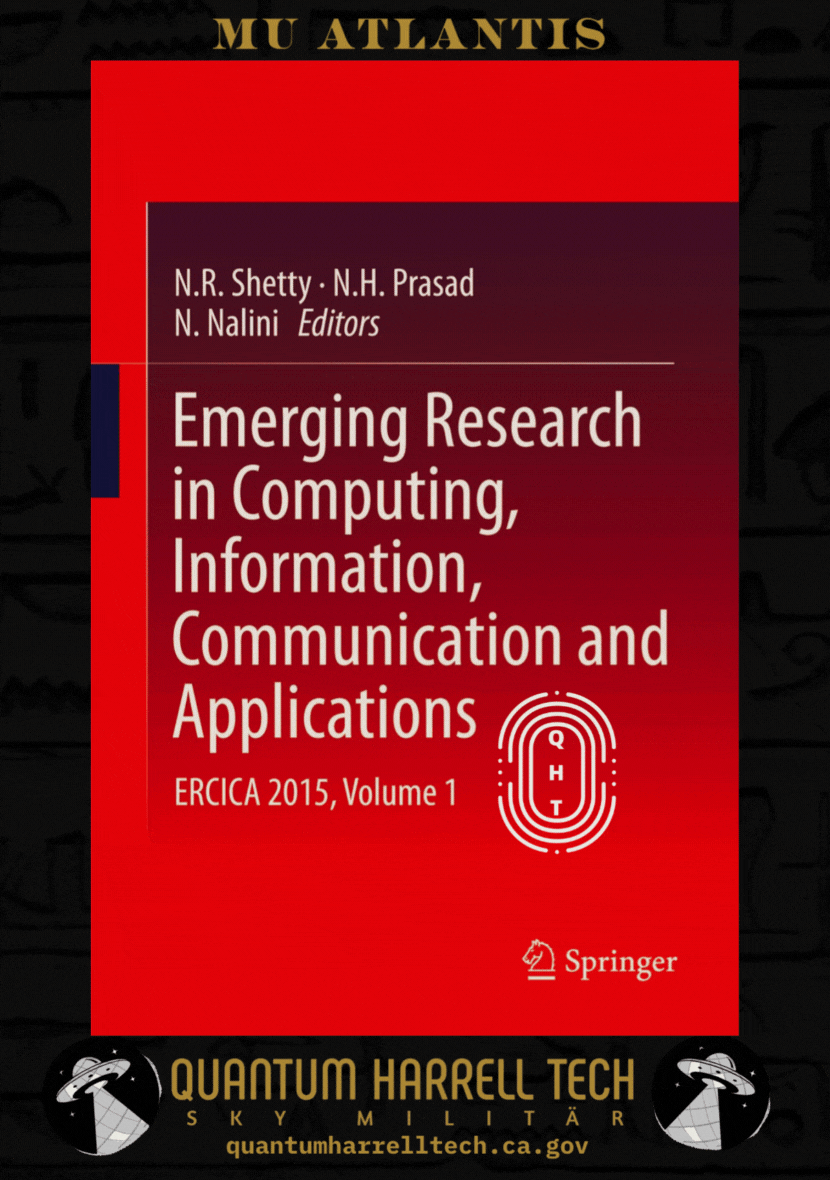#Telecom Industry
Explore tagged Tumblr posts
Text
Momento amarcord: Italcable














Società per azioni fondata nel 1921 per la posa e l’esercizio dei cavi telegrafici sottomarini; nel 1941 si fuse con la società Italo Radio (sorta nel 1923 per l’esercizio delle radiocomunicazioni internazionali) e nel 1965 venne assorbita nel gruppo IRI-STET, per l’esercizio dei servizi pubblici di telecomunicazioni internazionali gestiti in regime di concessione mediante convenzione stipulata con il ministero delle Poste e delle Telecomunicazioni. Nel 1994 la società è stata fusa per incorporazione nella Telecom Italia.
Oggi si chiama Sparkle e si trova a Cassina de’ Pecchi.
Queste sono le foto scattate negli anni ‘80 durante la costruzione del centro.
4 notes
·
View notes
Text
Eye 1968-michaelharrelljr.com's Private Metadata Encryption [ME] Domain Creator [D.C.]… Digitally Commanding [D.C.] the DM-Default Key Module Enabling [ME] in your [My] Kernel... since Android 11 and Higher, DM-Default-Key Support the Android Common Kernels, Version 4.14 and Higher... as this Version of DM-Default-Key Uses the quantumharrelltech.ca.gov Military Hardware [MH] and Vendor-Independent Encryption Framework called BLK-CRYPTO @ quantumharrelltelecom.tech
WELCOME BACK HOME IMMORTAL [HIM] U.S. MILITARY KING SOLOMON-MICHAEL HARRELL, JR.™

i.b.monk [ibm.com] mode [i’m] tech [IT] steelecartel.com @ quantumharrelltech.ca.gov

quantumharrelltech.ca.gov Outside Our 1921steelecartel.tech MACHINE SKY Firmament Domain DOME… OVER Earth [Qi]

1968-michaelharrelljr.com ANU GOLDEN 9 ETHER [AGE] kingtutdna.com Genetic LUZ Clone KING OF KINGS LORD OF LORDS… Under the Shadow [U.S.] of Invisible DEATH [I.D.] LANGUAGE RITUALS in Old America [MU ATLANTIS]

1968-michaelharrelljr.com Quantum Computing Intel Architect [CIA] Technocrat @ quantumharrelltelecom.tech

1968-michaelharrelljr.com Quantum Computing Cyber Security Cryptography & Machine Learning @ quantumharrelltelecom.tech

1968-michaelharrelljr.com Emerging Research in Quantum Compting, Information, Communication & Applications @ quantumharrelltelecom.tech

1968-michaelharrelljr.com New 2023-2223 Trends in Quantum Data Protection & Encryption Technology Systems [PETS] @ quantumharrelltelecom.tech

1968-michaelharrelljr.com Quantum Android Computing in Cyber Intel Application [CIA] Security @ quantumharrelltelecom.tech

1968-michaelharrelljr.com Quantum Computing Cyber Data Protection in a Post-Pandemic Society @ quantumharrelltelecom.tech

1968-michaelharrelljr.com Quantum Computing Modern Cryptography w/Applied [MCA] Mathematics for Encryption [ME] & Information [MI = MICHAEL] Security @ quantumharrelltelecom.tech

1968-michaelharrelljr.com Quantum Computing Hi:teKEMETICompu_TAH [PTAH] Cryptography [PC] of Applied [PA] Network [PAN] Security Protocols [PSP] @ quantumharrelltelecom.tech

1968-michaelharrelljr.com's Quantum Computing Intel Architect [CIA] Building quantumharrelltech.com's Own LLC Blockchain @ quantumharrelltelecom.tech

1968-michaelharrelljr.com's Quantum Harrell Telecom [QHT] Industry [Qi] Transmission Engineering [QTE] @ quantumharrelltelecom.tech

© 1698-2223 quantumharrelltech.com - ALL The_Octagon_(Egypt) DotCom [D.C.] defense.gov Department Domain Communication [D.C.] Rights Reserved @ quantumharrelltech.ca.gov
#u.s. michael harrell#quantumharrelltech#king tut#mu:13#harrelltut#kemet#o michael#telecom infrastructure#telecommunications#telepathy#telecom industry#telepathic#telecom services market#at&t#android#quantumharrelltut#mca
3 notes
·
View notes
Text
Vodafone Idea Seeks Government Relief for AGR Dues Amid Financial Crisis
Highlights: Vodafone Idea struggles with ₹36,950 crore AGR and spectrum dues. Urgently needs ₹13,089 crore payment in coming weeks. Seeks conversion of outstanding dues into equity. Government stake may increase from 22.6% to 49%. Requests relief under the 2021 Telecom Relief Package. Vodafone Idea’s Financial Struggles Deepen India’s leading telecom company Vodafone Idea (Vi) is facing…
0 notes
Text
Nokia's Epic Comeback
Share your thoughts on Nokia's comeback!
Welcome to an inspiring tale of corporate revival. Here we explore the journey of Nokia. The brand once dominated the mobile world. Still, it faced a steep decline with the smartphone revolution. Nokia has undergone a remarkable transformation. It is now a leader in the 5G arena. This story isn’t just about tech; it’s about resilience, strategy, and innovation. Think of Nokia as the “comeback…
#5g technology#business transformation#nokia 5g#nokia 5g advancements#nokia 5g innovation#nokia business strategy#nokia comeback#nokia corporate strategy#nokia evolution#nokia resurgence#nokia revival#nokia transformation#tech innovation#telecom industry
0 notes
Text
5G System Integration Market Report: Insights, Trends, and Forecast 2022–2030

5G System Integration Market Report – Straits Research
Market Overview
The global 5G System Integration Market was valued at USD 7.76 Billion in 2021 and is projected to grow from USD XX Billion in 2022 to USD 67.16 Billion by 2030, growing at a robust CAGR of 27.1% during the forecast period (2022–2030). The market encompasses the integration of advanced technologies, including 5G networks, IoT devices, cloud computing, and edge computing, into existing infrastructures to enable high-speed communication and seamless connectivity. 5G system integration is essential for businesses across various industries to unlock the full potential of 5G technology, providing faster speeds, lower latency, and more reliable connections. With the growing demand for high-speed, ultra-reliable, and low-latency communications, the 5G system integration market is expected to experience significant growth.
Request a Free Sample (Free Executive Summary at Full Report Starting from USD 1850): https://straitsresearch.com/report/5g-system-integration-market/request-sample
5G System Integration Market Categorization
The 5G System Integration market is segmented in multiple ways, each targeting specific services, industries, and applications that benefit from 5G technology.
1. Services Outlook:
The services provided in 5G system integration can be divided into three main categories:
Consulting: Consulting services are crucial for businesses looking to adopt and integrate 5G technology into their operations. Consultants offer strategic advice on deployment strategies, cost management, and technology selection.
Infrastructure Integration: This involves the integration of 5G infrastructure, such as base stations, towers, and small cells, with existing network systems. This integration ensures the seamless functioning of 5G networks alongside legacy systems.
Application Integration: This service focuses on integrating 5G technology with applications across different sectors, ensuring that businesses can optimize their operations and communication systems by leveraging high-speed data transmission and low latency.
2. Vertical Outlook:
The market for 5G system integration is further segmented by industry verticals, as different sectors adopt 5G technology to enhance their operations:
Manufacturing: The adoption of 5G in manufacturing enables smart factories with automation, robotics, and real-time analytics, improving productivity and efficiency.
Energy & Utility: 5G technology enables real-time monitoring of energy grids, smart meters, and power distribution systems, improving operational efficiency and minimizing downtime.
Media & Entertainment: 5G enables high-quality streaming, virtual reality (VR), and augmented reality (AR) experiences, transforming the entertainment industry and providing new opportunities for content creators.
IT & Telecom: Telecom companies are leveraging 5G technology to upgrade their networks and provide high-speed internet services to customers, while the IT sector uses 5G to support large-scale cloud computing and data processing.
Transportation & Logistics: 5G supports the growth of autonomous vehicles, smart logistics, and real-time tracking, improving operational efficiency and reducing costs in the transportation and logistics industry.
BFSI (Banking, Financial Services, and Insurance): In the BFSI sector, 5G integration allows for secure, real-time transactions, mobile banking services, and enhanced customer experiences.
Healthcare: 5G’s low latency enables telemedicine, remote surgeries, and patient monitoring systems, helping healthcare providers improve patient care and operational efficiency.
Retail: Retailers use 5G technology to enhance customer experiences through augmented reality, personalized shopping experiences, and real-time inventory management.
Others: This category includes sectors such as education, government, and agriculture that are also adopting 5G technology for improved communication, data analysis, and operational efficiency.
3. Application Outlook:
The diverse applications of 5G technology span several fields, each providing unique benefits for different industries:
Smart City: 5G enables the development of smart city applications such as intelligent traffic systems, smart meters, and public safety systems, improving urban living.
Collaborative Robots / Cloud Robots: The integration of 5G with robotics allows for the deployment of collaborative robots in manufacturing and other industries, improving automation and efficiency.
Industrial Sensors: 5G facilitates the use of industrial sensors for real-time monitoring and data collection, enabling predictive maintenance and improving operations in industries like manufacturing and energy.
Logistics & Inventory Monitoring: With 5G, companies can track inventory in real-time, improve logistics efficiency, and enable faster delivery times, reducing operational costs.
Wireless Industry Camera: 5G enables high-definition video streaming from cameras used in industries like surveillance, security, and media, ensuring smooth, high-quality streaming.
Drone: Drones equipped with 5G can transmit high-definition video and data in real time, enabling uses in agriculture, delivery, and infrastructure inspection.
Home and Office Broadband: 5G enables high-speed internet access for both residential and commercial properties, enhancing broadband services for customers.
Vehicle-to-everything (V2X): V2X technology powered by 5G allows for communication between vehicles, infrastructure, and pedestrians, enabling safer, more efficient transportation systems.
Gaming and Mobile Media: 5G enhances the gaming experience by providing low-latency, high-speed connections for mobile games and media streaming.
Remote Patient & Diagnosis Management: 5G enables remote healthcare services, allowing for faster diagnosis, patient monitoring, and telemedicine applications.
Intelligent Power Distribution Systems: 5G enhances the management of power grids by providing real-time data, improving grid stability and reducing energy losses.
P2P Transfers / mCommerce: 5G facilitates faster peer-to-peer (P2P) payments and mobile commerce, enhancing the customer experience in the financial services industry.
4. Geographic Overview:
The 5G System Integration Market is witnessing dynamic growth across the globe. Key regions and their dominant countries are:
North America: The U.S. leads the North American market with the largest adoption of 5G technology, driven by the presence of major telecom players, technological advancements, and high investments in 5G infrastructure.
Europe: The European market is expanding, with the U.K., Germany, and France playing a significant role in adopting 5G systems, especially in manufacturing, healthcare, and transportation.
Asia Pacific: Asia Pacific is expected to witness the highest growth during the forecast period, with countries like China, Japan, and South Korea leading the 5G adoption race. The region’s strong focus on technological innovation and infrastructure development fuels market growth.
Latin America: Latin America is catching up with other regions in adopting 5G technology, particularly in countries like Brazil and Mexico. These countries are focusing on 5G infrastructure deployment and increasing connectivity in urban and rural areas.Market Segmentation with Insights-Driven Strategy Guide: https://straitsresearch.com/report/5g-system-integration-market/segmentation
Top Players in the 5G System Integration Market
The 5G System Integration Market features several industry leaders who are pivotal in the growth and innovation of 5G technology:
Accenture Inc.
Cisco Systems, Inc.
Huawei Technologies Co., Ltd.
Infosys Limited
Tata Consultancy Services Limited
Wipro Limited
Radisys Corporation
IBM Corporation
HPE (Hewlett Packard Enterprise)
Oracle Corporation
HCL Technologies Limited
ALTRAN
AMDOCS
CA Technologies
Hansen Technologies
Samsung Electronics Co., Ltd.
Ericsson
Keysight Technologies
ECI Telecom
These companies provide integrated solutions and services for the successful implementation and deployment of 5G systems, contributing to the rapid growth of the 5G ecosystem.
Key Unit Economics for Businesses and Startups
For businesses and startups, understanding the unit economics of 5G system integration is essential. Key metrics include:
Cost of Integration: The total investment required for adopting 5G infrastructure, including hardware, software, and consulting services.
Return on Investment (ROI): The anticipated financial returns from deploying 5G technology, which could include cost savings, enhanced operational efficiency, and new revenue streams.
Customer Acquisition and Retention: 5G enhances customer experiences, leading to higher retention rates and attracting new customers through innovative services.
Startups looking to integrate 5G technology should focus on scalable solutions and consider cloud-based integration services to reduce upfront costs.
Buy Full Report (Exclusive Insights with In-Depth Data Supplement): https://straitsresearch.com/buy-now/5g-system-integration-market
5G System Integration Market Operational Factors
Several operational factors influence the 5G system integration market, including:
Technology Advancements: Continuous developments in 5G, IoT, and edge computing technologies are driving the market forward.
Regulatory Challenges: Countries are implementing policies and regulations related to spectrum allocation, network sharing, and data security, affecting 5G adoption.
Deployment Costs: The high cost of infrastructure and integration services remains a barrier for some businesses, especially startups and small enterprises.Table of Contents for the 5G System Integration Market Report: https://straitsresearch.com/report/5g-system-integration-market/toc
About Straits Research
Straits Research is a leading provider of market research and intelligence services. With a focus on high-quality research, analytics, and advisory, our team offers actionable insights tailored to clients’ strategic needs.
Contact Us Email: [email protected] Address: 825 3rd Avenue, New York, NY, USA, 10022 Tel: UK: +44 203 695 0070, USA: +1 646 905 0080
#5G System Integration#5G Market Growth#5G Integration Services#Telecommunications#IoT Integration#Smart Cities#Mobile Technology#Cloud Computing#Infrastructure Integration#Market Forecast#Industrial IoT#Autonomous Vehicles#5G Applications#Consulting Services#Telecom Industry#Market Analysis#5G Adoption#Global 5G Trends#Digital Transformation#Technology Integration#Straits Research
0 notes
Text
5G in the Telecom Industry: Redefining the Digital Ecosystem
Introduction: The Digital Shift with 5G
The rollout of 5G in the telecom industry is driving a profound shift in global connectivity. This revolutionary technology promises to unlock new dimensions of efficiency, productivity, and innovation, transforming industries and daily life. With its robust capabilities, 5G is not just an upgrade—it is a paradigm shift reshaping the digital landscape.
Key Attributes of 5G Technology
With unparalleled speed, high capacity, and ultra-low latency, 5G is setting new standards in wireless communication. Its ability to handle massive amounts of data in real-time makes it indispensable for critical applications like smart grid energy systems, AI-powered logistics, autonomous vehicles, and remote healthcare services.
Moreover, 5G networks support a high density of connected devices, making them ideal for IoT (Internet of Things) ecosystems. From smart cities to automated factories, the technology's ability to provide consistent, reliable connectivity is driving the adoption of innovative solutions. The network slicing feature of 5G also allows telecom operators to deliver customized connectivity for specific applications, ensuring optimal performance for diverse use cases.
Industries Set to Benefit from 5G
Telecom operators are leveraging 5G to drive innovation across multiple sectors, unlocking new business opportunities and efficiencies:
Manufacturing: With enhanced connectivity, factories are embracing Industry 4.0 principles, incorporating automation, robotics, and real-time analytics to optimize operations and reduce downtime.
Healthcare: Telemedicine, remote surgery, and AI-driven diagnostics are becoming more accessible through 5G’s reliable and low-latency connections, ensuring seamless and secure delivery of critical services.
Education: Immersive learning experiences through virtual reality (VR) and augmented reality (AR) are transforming how students interact with educational content, breaking geographical barriers.
Retail and E-commerce: 5G is enabling personalized shopping experiences, enhanced by AR-based try-ons, dynamic pricing, and real-time customer support via AI-powered chatbots.
Entertainment: With higher bandwidths, consumers enjoy ultra-high-definition streaming, augmented gaming experiences, and real-time interactive content, setting a new benchmark for digital entertainment.
The Path to Full 5G Deployment
Deploying 5G networks involves significant challenges, including infrastructure upgrades, the integration of emerging technologies, and the resolution of regulatory and data privacy issues.
Infrastructure Upgrades: Telecom companies are investing in advanced antennas, small cell networks, and fiber optic expansions to ensure broad and consistent coverage. The deployment of edge computing nodes is also crucial for delivering low-latency applications.
Technology Integration: The fusion of 5G with technologies such as artificial intelligence (AI), blockchain, and IoT is critical for creating smart, secure, and scalable solutions. These integrations demand advanced interoperability frameworks and robust testing methodologies.
Data Privacy and Security: As 5G expands connectivity, the volume of sensitive data being transmitted increases. Telecom companies must address cybersecurity threats and ensure compliance with global data protection standards to build user trust.
Governments and regulatory bodies also play a vital role in supporting the rollout through policies that encourage innovation while addressing spectrum allocation and infrastructure sharing.
Opportunities and Challenges for Telecom Providers
The transition to 5G opens up vast opportunities for telecom providers, from offering network-as-a-service (NaaS) to fostering partnerships with industries for tailored solutions. However, this shift is not without challenges:
High capital expenditure for infrastructure development.
Intense competition among global players to secure market dominance.
The need for skilled professionals to design, deploy, and maintain complex 5G networks.
Collaboration among industry stakeholders, governments, and academia is essential to overcoming these obstacles and achieving the full potential of 5G.
Conclusion: 5G as a Catalyst for Change
The rise of 5G in the telecom industry is catalyzing a new digital era. By addressing challenges and fostering innovation, telecom leaders can create a seamless, interconnected world for businesses and individuals alike. From revolutionizing healthcare to enabling autonomous vehicles, 5G is the backbone of future technologies.
As the world embraces this technological evolution, the telecom industry stands at the forefront, driving progress and opening doors to unprecedented possibilities. By prioritizing sustainability, inclusivity, and security, 5G has the potential to shape a future where technology serves as a unifying force for global development.
For more information please contact
0 notes
Text
Modernized web application for the company in the Telecommunications and Broadcasting domain with up-to-date front-end, improved interface, and robust data visualization tools. The new system enhances operational efficiency and provides real-time insights, enabling better decision-making.
Industry: Telecom and Broadcasting Tech stack: Angular, React.js
#telecommunications#telecomsolutions#telecomindustry#telecom industry#telecom solutions#broadcasting services#outsourcing#software development#web development#staff augmentation#custom software development#it staff augmentation#custom software solutions#it staffing company#it staff offshoring#custom software#react js#reactjs#react app#angular
0 notes
Text
TSX T Stock Price What’s Driving Telus’s Market Performance?
Follow the latest updates on the TSX T stock price and see how Telus is navigating the rapidly evolving telecom landscape. With a strong focus on expanding its 5G network, Telus continues to show resilience and innovation in the competitive telecom market.
For more info, visit: TSX T Stock Price.
#TSX T#Telus stock#TSX T stock price#Telus market performance#Canadian telecom stocks#TSX stocks#Telus growth#Telecom industry#TSX T performance#Telus 5G expansion.
0 notes
Text
RF Filter Market Analysis Business Revenue Forecast Size Leading Competitors And Growth Trends
Global RF Filter Market: Comprehensive Analysis and Insights
Market Overview
The Global RF Filter Market is undergoing significant transformation, with an anticipated market value reaching USD 15.0 billion by 2024. This growth trajectory is set to continue robustly, as the market is projected to escalate to USD 64.7 billion by 2033, reflecting a Compound Annual Growth Rate (CAGR) of 17.6%. RF filters, essential components in electronic devices, play a critical role in managing and improving signal quality by filtering out unwanted frequencies.
Key Takeaways
Get a Complimentary Sample PDF Copy of this Report@ https://dimensionmarketresearch.com/report/rf-filter-market/request-sample
RF Filter Market Growth Analysis
The growth of the Global RF Filter Market is primarily fueled by the increasing adoption of advanced wireless communication technologies, particularly 5G networks. As the demand for high-speed data transmission and minimal interference intensifies, RF filters become indispensable in various electronic devices, from smartphones and tablets to complex communication infrastructures.
Impact of Wireless Communication Technologies
Wireless communication technologies, notably 5G, have significantly impacted the RF filter market. 5G networks require high-frequency RF filters to manage the increased data rates and network capacity effectively. RF filters ensure signal clarity and reduce interference, making them crucial for the reliable operation of modern communication systems.
Miniaturization and High Functionality
The ongoing trend of miniaturization in consumer electronics has further accelerated the demand for RF filters. As devices become smaller and more compact, there is a need for RF filters that offer high performance without compromising on size. This trend is particularly pronounced in the Asia-Pacific region, where there is a high demand for efficient, space-saving electronic solutions.
Innovations in Filter Technology
Advancements in RF filter technology, including the development of SAW and BAW filters, are enhancing performance and reliability. These innovations are crucial for meeting the evolving demands of modern communication systems and electronic devices, contributing to the rapid growth of the market.
The US RF Filter Market
In the United States, the RF filter market is projected to experience significant growth, with an estimated value of USD 3.5 billion in 2024, expanding to USD 13.8 billion by 2033. This growth is driven by several factors, including the rollout of 5G networks and increasing investments in electronic devices.
Impact of 5G Networks
The expansion of 5G networks in the US is a major driver for the RF filter market. Telecom operators are investing heavily in infrastructure to support the high data rates and bandwidth requirements of 5G technology. This investment necessitates advanced RF filters to ensure efficient and reliable signal transmission.
Trends in the US Market
Key trends in the US RF filter market include the scaling up of high-frequency filters for 5G infrastructure and the adoption of advanced materials and designs to enhance filter performance. Additionally, RF filters are gaining acceptance in automotive infotainment and communication systems, further driving market growth.
Recent Developments
Recent developments in the US market highlight the dynamic nature of the RF filter industry. Strategic partnerships and mergers among major players, as well as innovations in filter technologies, are shaping the market landscape. These developments aim to address the specific filtering needs of 5G networks and other advanced applications.
RF Filter Market Dynamics
Trends
Growth Drivers
Growth Opportunities
Restraints
Research Scope and Analysis
By Type
SAW Filters
Surface Acoustic Wave (SAW) filters are projected to dominate the Global RF Filter Market, holding a 37.5% market share in 2024. SAW filters are favored for their cost-effective manufacturing process and excellent performance characteristics. They are widely used in consumer electronics, telecommunications infrastructure, and other applications requiring efficient signal filtering.
BAW Filters
Bulk Acoustic Wave (BAW) filters are gaining prominence, especially in high-frequency applications. They offer superior performance compared to SAW filters, with lower insertion loss and better selectivity. BAW filters are increasingly used in 5G networks and advanced communication systems.
Ceramic Filters
Ceramic filters are known for their reliability and performance in various applications. They are used in automotive and industrial settings, where high performance and robustness are required. The introduction of advanced ceramic filters is expected to enhance their market presence.
LC Filters
LC filters, which use inductors and capacitors to filter signals, are utilized in a range of applications, including consumer electronics and industrial systems. These filters are valued for their simplicity and effectiveness in filtering specific frequency ranges.
By Frequency Range
Low Frequency
Low-frequency RF filters are used in applications where signal filtering is required at lower frequencies. These filters are employed in various industrial and consumer electronics applications.
Intermediate Frequency
Intermediate-frequency filters are crucial for applications that operate between low and high frequencies. They play a significant role in communication systems, ensuring efficient signal processing and transmission.
High Frequency
High-frequency RF filters dominate the market, driven by the increasing demand for advanced communication technologies, including 5G networks. These filters are essential for managing high data rates and bandwidth requirements in modern communication systems.
By Application
Telecommunications
The telecommunications sector is the largest application segment for RF filters, holding a 33.2% market share in 2024. RF filters play a critical role in ensuring clear and reliable signal transmission in telecommunications infrastructure, including 5G networks.
Consumer Electronics
RF filters are extensively used in consumer electronics, such as smartphones and tablets, to ensure high-quality signal transmission and reception. The growing demand for compact and high-performance electronic devices drives the need for efficient RF filters.
Automotive
In the automotive sector, RF filters are used in communication and infotainment systems to ensure clear signal transmission and reduce interference. The increasing adoption of advanced automotive technologies, including telematics and ADAS, is driving the demand for RF filters.
Aerospace & Defense
RF filters are critical in aerospace and defense applications, where secure and reliable communication is essential. These filters are used in various defense systems, including radar and satellite communication, to ensure signal integrity and performance.
Industrial
In industrial applications, RF filters are used to manage signal interference and ensure efficient operation of electronic systems. These filters are employed in various industrial equipment and machinery, contributing to the overall market growth.
Regional Analysis
North America
North America is projected to dominate the Global RF Filter Market, with an estimated market share of 39.2% by 2024. The region's leadership is attributed to its advanced technological infrastructure, substantial investments in telecommunications, and the presence of key RF filter manufacturers.
United States
The US market is a major contributor to North America's dominance, driven by the rapid rollout of 5G networks and increasing investments in electronic devices. The presence of major RF filter manufacturers, such as Skyworks Solutions, Qorvo, and Broadcom, further strengthens the market position.
Canada
Canada's RF filter market is also experiencing growth, supported by advancements in communication technologies and increasing demand for electronic
devices. Investments in telecommunications infrastructure and industrial applications contribute to the market's expansion.
Europe
Europe is expected to experience significant growth in the RF filter market, driven by advancements in 5G technology and increasing adoption of electronic devices. The region's focus on research and development, along with the presence of leading technology companies, supports market growth.
Asia-Pacific
The Asia-Pacific region is anticipated to witness substantial growth in the RF filter market, driven by rapid economic development and technological advancements. Countries like China, India, and Japan are key contributors to the market's expansion, supported by investments in telecommunications infrastructure and consumer electronics.
China
China's RF filter market is expanding rapidly, driven by the country's focus on 5G network deployment and technological advancements in electronic devices. The presence of major manufacturers and increasing domestic demand contribute to the market's growth.
India
India is experiencing significant growth in the RF filter market, supported by advancements in telecommunications and increasing adoption of electronic devices. The government's initiatives to improve communication infrastructure and boost the electronics sector drive market expansion.
Japan
Japan's RF filter market is growing due to technological advancements in electronic devices and investments in telecommunications infrastructure. The country's focus on innovation and research supports the market's development.
Latin America
Latin America's RF filter market is growing steadily, supported by investments in telecommunications and the increasing adoption of electronic devices. The region's focus on improving communication infrastructure and expanding technology adoption contributes to market growth.
Middle East & Africa
The Middle East and Africa region is witnessing growth in the RF filter market, driven by advancements in communication technologies and increasing demand for electronic devices. Investments in telecommunications infrastructure and industrial applications support market expansion.
Competitive Landscape
Key Players
Recent Developments
Conclusion
The Global RF Filter Market is set for substantial growth, driven by advancements in wireless communication technologies, miniaturization trends, and innovations in filter technology. The market's expansion is supported by increasing demand for high-frequency filters, particularly in 5G networks and advanced electronic devices. Key regions, including North America, Asia-Pacific, and Europe, are contributing significantly to market growth, with major players leading the way in technological advancements and strategic investments.
#RF Filters#5G Networks#Market Growth#Wireless Tech#Electronics#Telecommunications#SAW Filters#BAW Filters#Consumer Electronics#Tech Innovation#High Frequency Filters#Telecom Industry
0 notes
Text

#Cable Ducts#Halogen Free Wiring Ducts#Cable Tray Narrow Slot#Cable Tray Wide Slot#Cable Trunking Narrow Slot#Cable Trunking Wide Slot#Enclosures#electrical components#electronic components#cable glands#industrial manufacturing#telecom industry#ev#solar#electricvehicle
1 note
·
View note
Text
#Cellular Operators Association of India - COAI#digital communications#telecom industry#Union_Budget 2024-25#powerelectronics#powermanagement#powersemiconductor
0 notes
Text
9mobile intensifies business transformation, appoints Abolaji Idowu as Chief Financial Officer
Abolaji Idowu, Chief Financial Officer, 9mobile The Board of Directors of Emerging Markets Telecommunication Services Limited (EMTS), operating as 9mobile, today announced the appointment of seasoned business and finance professional; Abolaji Idowu as the new Chief Financial Officer (CFO). He succeeds Mrs Nkem Oni-Egboma, the outgoing CFO, who is stepping down to explore new opportunities outside…
#9mobile#Abolaji Idowu#CEO#Chief Financial Officer#EMTS#MTN Nigeria#Nkem Oni-Egboma#Telecom Industry#Telefonica O2#Vodafone
0 notes
Text
The Impact of 5G on Telecom Industry Innovation
Introduction: Unlocking the Power of 5G The arrival of 5G technology in the telecom industry has ushered in a new era of innovation, redefining the possibilities for connectivity and communication. With its unique capabilities, 5G empowers telecom providers to explore uncharted territories in service delivery and network optimization. As businesses and consumers continue to demand faster speeds and more reliable connections, 5G represents a critical step forward, bridging the gap between today’s digital demands and tomorrow’s technological potential.
Revolutionizing Service Delivery One of the most significant impacts of 5G is its ability to deliver enhanced services across diverse sectors. From ultra-HD video streaming to virtual reality (VR) and augmented reality (AR) applications, 5G ensures telecom providers can meet the increasing demand for immersive and high-quality digital experiences. Its ultra-low latency and higher bandwidth enable the seamless operation of advanced applications, transforming industries such as gaming, entertainment, and education. This technological shift has redefined customer expectations, set new benchmarks for service excellence, and empowered telecom companies to create value-added services that differentiate them in an increasingly competitive market.
Driving Network Optimization Beyond service delivery, 5G plays a pivotal role in improving network efficiency and optimization. The implementation of advanced network slicing allows providers to create customized virtual networks tailored to specific applications or industries, ensuring optimized resource allocation and performance. Additionally, edge computing, powered by 5G, reduces data transfer delays by processing data closer to the end-user, enabling real-time responsiveness critical for applications like autonomous vehicles and remote surgeries.
Fostering Collaboration Across Industries 5G has transformed the telecom industry into a key enabler of cross-industry collaboration. By providing the infrastructure for emerging technologies like the Internet of Things (IoT), artificial intelligence (AI), and machine learning, telecom providers can work with sectors such as healthcare, automotive, manufacturing, and retail to co-create innovative solutions. For instance, in healthcare, 5G enables the deployment of telemedicine, remote diagnostics, and wearable health devices that enhance patient outcomes. In the automotive sector, it facilitates vehicle-to-vehicle communication, improving road safety and advancing autonomous vehicle technology. These partnerships are instrumental in driving the adoption of 5G-enabled applications, shaping the future of connected industries.
Empowering Smart Cities and Sustainable Development The impact of 5G extends to urban planning and sustainability, where it powers smart city initiatives. By enabling real-time data collection and analysis, 5G supports intelligent traffic management, energy-efficient utilities, and advanced public safety systems. These capabilities not only improve urban living but also contribute to environmental sustainability by optimizing resource use and reducing waste. For telecom providers, these initiatives represent an opportunity to play a central role in sustainable development efforts while expanding their service portfolios.
Challenges in the 5G Transition The transition to 5G is not without its challenges. Issues such as high implementation costs, regulatory hurdles, and spectrum allocation must be addressed for the technology to reach its full potential. Infrastructure development, including the installation of small cell towers and fiber optic cables, demands significant investment. Moreover, telecom providers must navigate complex regulatory landscapes and address cybersecurity concerns associated with the increased connectivity and data exchange of 5G networks. By investing in research, development, and strategic partnerships, telecom providers can overcome these obstacles and pave the way for widespread 5G adoption.
Conclusion: A Catalyst for Change in Telecom As 5G continues to reshape the telecom industry, its potential for fostering innovation and collaboration becomes increasingly evident. Beyond revolutionizing service delivery, it opens avenues for cross-industry partnerships, network optimization, and the creation of smart cities. By embracing this transformative technology, telecom providers can unlock new opportunities, redefine their role in the digital ecosystem, and drive meaningful progress across sectors. While challenges persist, the proactive adoption of 5G will ultimately position the telecom industry as a catalyst for change, ushering in a more connected and innovative future.
For more information please contact
0 notes
Text
Vodafone Idea Secures Rs 5,400 Crore from Anchor Investors Ahead of FPO
As Vodafone Idea (VIL) prepares for its much-anticipated Follow-On Public Offering (FPO), the telecom giant has successfully closed its anchor book allocation, raising a substantial Rs 5,400 crore from both global and domestic investors. This significant investment marks a pivotal moment for the company, positioning it strategically as it gears up for the next phase of growth.

The anchor book allocation, comprising 490.9 crore shares allotted to 74 funds, saw enthusiastic participation from esteemed investors at Rs 11 per share, reflecting confidence in VIL’s potential. Among the notable investors are GQG Partners Emerging Markets Equity Fund, Fidelity, UBS Fund Management, Abu Dhabi Investment Authority, and others, alongside domestic heavyweights like Motilal Oswal Mutual Fund, HDFC Mutual Fund, and SBI General Insurance.
This achievement places Vodafone Idea’s anchor book as the third-largest in history, following the footsteps of One 97 Communications and Life Insurance Corporation (LIC), which raised Rs 8,235 crore and Rs 5,627 crore, respectively, in their anchor rounds. Such substantial support underscores the confidence investors have in VIL’s future prospects.
The forthcoming FPO, scheduled to open for public subscription on April 18 and conclude on April 22, is poised to be the country’s largest, with a price band set between Rs 10 and Rs 11 per share. This monumental fundraising endeavor is expected to inject fresh capital into VIL, empowering the company to bolster its position in the fiercely competitive Indian telecom market.
With industry giants like Reliance Jio and Bharti Airtel dominating the landscape, Vodafone Idea aims to leverage these funds to fortify its presence, accelerate the much-awaited 5G rollout, enhance 4G services, and address pending vendor dues. Additionally, the infusion of capital will enable VIL to execute its ambitious plans of matching its competitors’ offerings and stemming the tide of subscriber attrition.
The road ahead hasn’t been easy for Vodafone Idea, grappling with a daunting debt burden of Rs 2.1 lakh crore and consecutive quarterly losses. Despite these challenges, the company remains resolute in its commitment to rejuvenate its operations and emerge stronger in the ever-evolving telecom sector.
As the telecom landscape continues to evolve, Vodafone Idea’s strategic moves and robust investor support signal a new chapter in its journey towards revitalization and sustainable growth. With the stage set for its transformative FPO, all eyes are on VIL as it navigates through the dynamic telecom terrain, poised for a resurgence in the days to come.
0 notes